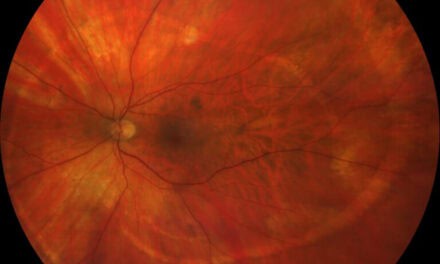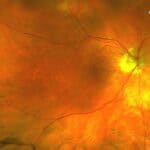
The Most Important Research Trial Metric for Clinical Practice

I love key performance indicators (KPIs). Whether it’s in my practice, my finances, or my running, I’ve come to appreciate the clarity they offer. They help me track progress, adjust course, and most importantly, make decisions rooted in data rather than guesswork.
In my business, I use revenue per OD hour to analyze efficiency. In my life, I measure weekly mileage, books read per month, and my monthly saving and giving percentages. Why? Because KPIs simplify complex systems and anchor decisions in something more reliable than a hunch.
But what about in the clinic?
In medicine, we often substitute precision with abstraction. We lean on statistical terms like p-values, confidence intervals, and relative risk—concepts that rarely translate to the patient sitting in our exam chair. Ask any clinician to explain p-values in plain English, and you’ll likely hear some variation of “it tells us whether the result is significant.” But that’s not entirely accurate. Worse, it’s practically useless when trying to communicate what a treatment might actually do for a patient.1
That’s why I believe the Number Needed to Treat (NNT) is the single most important trial metric in clinical practice. It’s not perfect, but when it comes to decision making at the point of care, NNT gets us as close as possible to answering the question every patient is silently asking: is this treatment worth it for me?
What is NNT?
The Number Needed to Treat is exactly what it sounds like: how many patients you need to treat to prevent one bad outcome or to achieve one desired effect. Mathematically, it’s the inverse of the absolute risk reduction (ARR). That’s the difference between the event rate in the control group and the event rate in the treatment group.
NNT = 1 / ARR
Let’s say a new medication reduces the chance of progression from ocular hypertension to glaucoma from 10 percent to 5 percent. That’s an ARR of 5 percent, or 0.05. Divide 1 by 0.05, and you get 20. So, you’d need to treat 20 people to prevent one case of glaucoma. That’s your NNT.2
It’s a simple, intuitive concept. More importantly, it’s one that patients can understand. You can say, “If we treat 20 people like you, one will benefit from the medication.” That doesn’t require a background in biostatistics to grasp.
Why It Matters
Unlike relative risk reductions (which can sound more impressive than they are), NNT forces us to look at the actual benefit. And it naturally invites a conversation about trade-offs: cost, side effects, adherence, and patient values.
Want to prescribe statins for primary prevention? The NNT to prevent one cardiovascular event over five years in low-risk patients can be as high as 1003. That means 99 patients take the drug without benefit, exposing themselves to potential side effects, cost, and hassle.
By contrast, treating bacterial keratitis early with fortified antibiotics? The NNT to prevent vision loss is often low, meaning it’s highly effective and worth doing. NNT anchors our treatment plans in real world outcomes, not just academic abstractions.
Common NNTs in Medicine and Eyecare
Some well-known examples:
- Statins to prevent cardiovascular disease events in low risk patients: NNT = ~146 (over 5 years)3
- Statins to prevent cardiovascular disease events in high risk patients: NNT = ~53 (over 5 years)3
- Aspirin for stroke prevention in atrial fibrillation: NNT = ~67 (patients with no prior stroke)4
In eyecare, we’re starting to see more studies report NNT, though it’s still rare. But we can and should calculate it ourselves when possible.
Pilocarpine 1.25% vs Pilocarpine 0.4%: A Real-World Example
Consider the two presbyopia drops currently on the market: pilocarpine 1.25% and pilocarpine 0.4%.
In the GEMINI 1 trial for pilocarpine 1.25%, 31 percent of patients achieved a three-line improvement in binocular near visual acuity without losing distance acuity, compared to 8 percent of placebo. That’s an absolute risk reduction of 23 percent.5
NNT = 1 / 0.23 ≈ 4.3
In the clinical trials for pilocarpine 0.4%, 40 percent of patients gained three lines of monocular near vision, compared to 19 percent of placebo. ARR = 19 percent.6
NNT = 1 / 0.21 ≈ 4.8
As we can see, the NNT between the two concentrations of pilocarpine are similar. However, one is referring to improvement in monocular acuity whereas the other is referring to binocular acuity. This provides easy to understand information for us to communicate clearly to our patients.
Another important note in this comparison is that side effects were lower with pilocarpine 0.4%. Headache, brow ache, and dim vision were much less frequently reported compared to pilocarpine 1.25%, which has a higher rate of these adverse events. This highlights how NNT alone doesn’t tell the whole story; it must be weighed alongside tolerability and patient experience.
The Bottom Line
As clinicians, we owe our patients clarity. We don’t need to recite statistical models or complex graphs to do that. Sometimes the best way to apply evidence is the simplest:
“If we treat X number of people like you, one benefits.”
That’s NNT. That’s actionable. And that’s what helps us become what I call the Wise Practitioner: someone who blends evidence, experience, and empathy to make decisions under uncertainty.
So the next time you read a paper or hear a drug rep tout “significant results,” ask yourself: What’s the NNT? It might just be the most important number in medicine.
References
- Phillips MR, Wykoff CC, Thabane L, Bhandari M, Chaudhary V; Retina Evidence Trials InterNational Alliance (R.E.T.I.N.A.) Study Group. The clinician’s guide to p values, confidence intervals, and magnitude of effects [published correction appears in Eye (Lond). 2023 May;37(7):1515. doi: 10.1038/s41433-021-01914-2.]. Eye (Lond). 2022;36(2):341-342.
- Kass MA, Heuer DK, Higginbotham EJ, et al. The Ocular Hypertension Treatment Study: a randomized trial determines that topical ocular hypotensive medication delays or prevents the onset of primary open-angle glaucoma. Arch Ophthalmol. 2002;120(6):701-830.
- Michel Rossignol, Michel Labrecque, Michel Cauchon, Marie-Claude Breton, Paul Poirier, Number of patients needed to prescribe statins in primary cardiovascular prevention: mirage and reality, Family Practice, Volume 35, Issue 4, August 2018, Pages 376–382,
- Lip GY, Boos CJ. Antithrombotic treatment in atrial fibrillation. Heart. 2006;92(2):155-161.
- Singh M, Sinha BP, Dutta S, Deokar KK, Mishra D, Goswami K. A Systematic Review and Meta-Analysis on the Efficacy and Safety of Topical Pilocarpine 1.25% in Presbyopia Treatment. J Curr Ophthalmol. 2025;36(2):111-121. Published 2025 Jan 18.
- U.S. Food and Drug Administration. Clinical Review: NDA 217836, Pilocarpine Hydrochloride Ophthalmic Solution, 0.4% (Pilocarpine 0.4%). Published January 22, 2024. Accessed May 21, 2025. https://www.accessdata.fda.gov/drugsatfda_docs/nda/2024/217836Orig1s000MedR.pdf
Dr. Klute owns and practices at Good Life Eyecare, a multi-location practice in Eastern Nebraska and Western Iowa. He is a fellow of the American Academy of Optometry and is certified by the American Board of Certification in Medical Optometry. He writes and lectures on primary eye care practice management, evidence-based medicine, glaucoma, and dry eye disease.







